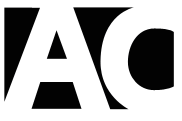My business partner and I have something of a running disagreement on the efficacy of email marketing as an SEO tool. We wholeheartedly agree on its usefulness as an engagement tool – to capture leads and maintain a connection with them until a sale (or action) is solicited.
But I think the very things that make email marketing effective to capture leads, also makes it effective to reduce bounce rates and improve on-page metrics, which in turn is good for SEO. He doesn’t necessarily disagree, but doesn’t think it’s quite as important as some of the other things you can do to drive engagement on a site.
Why does our admittedly-minor disagreement matter?
Because it highlights the tricky nature of email marketing. Far too many people tout email marketing as the end all and be all of successful online marketing, but for a number of reasons, millions of people attempt it and fail, or at least fail to capitalize on the list they build.
There are a number of reasons for this, but at the top of the list is the content being written in those newsletters.
Whether you are an Internet marketer, business owner, or a freelancer who wants to offer email newsletter writing services, being able to write a strong newsletter is a powerful skill you can leverage to generate success for your business many times over.
The Sales Pitch
Email marketing works for two reasons – first, it keeps your prospects engaged with your brand long enough for them to make a decision and buy your service. Studies have shown it takes as many as 8 interactions with a brand before someone is willing to buy. If they only ever see your website once, it’s not enough.
The second thing, however, is even more important. Email marketing allows you to build trust and become an authority in that niche. And trust is not based on repeated sales pitches.
If someone sees a pitch, they put up barriers and eventually your messages get deleted and then spam-tagged. Good email marketing doesn’t sell but educates and entertains. The pitch comes later.
The Headline
None of the above matters if you can’t get your prospects to open the email in the first place.
A good headline should be evocative, descriptive, and personalized. So use their name when possible, lead to something they’ll want to know more about, and describe what is in the message.
A headline like this won’t work:
“Read more about the marketing methods I like for my business”
The following would be more effective:
“Discover 10 marketing tools to grow your business”
And the following is even better:
“Jim, I have 10 marketing tools you should check out”
The more specific you get, the more personal you get, the more likely someone is to open that message.
The Formatting
If you have Gmail you know that images are often blocked at first. If you send an image heavy, HTML loaded email, the odds are that not everyone on your list can read it…and most of them won’t.
So play to the common denominator. Stick with plain text, a straightforward outline, and make it phone friendly. That means about 300px wide and short paragraphs – no more than 3-4 lines at the longest.
I also like to keep my total message length under 600 words, and I use multiple links and ASCII characters to break up the text.
Here’s an example:
Hi Jim,
I hope you’re doing well. I just wanted to send
a quick message and remind you about the
webinar we have coming up in just one week.
http://anthonychatfield.com/go/webinar
If you haven’t yet, get to the site, signup and
lock in your seat before they are full.
I can’t guarantee those spaces will last for long!
====================================
That’s not why I emailed you today though. In fact
I want to talk about something a little less digital…
Get the idea? It’s easy to read, broken up for quick scanning and whenever I reference something, I provide a link they can click to go there. I also write out all links for text-only email browsers that may not display an HTML link.
Calls to Action
I’d say 95% of my emails are value-based. I provide a useful tip, strategy, tool, or idea that my readers can immediately put into action if they so choose. They are not designed to sell, nor are they designed to squeeze an action.
However, that doesn’t mean I don’t have a call to action at the end of the email.
People are used to a value proposition trade.
You offer them this great tip, they click on a link you provide. Nothing is ever truly free, it’s just a matter of giving more than you get and ensuring your prospects are excited to click a link you provide because they trust you are looking out for them, not yourself.
Your call to action should be less than a paragraph, simple, and to the point. Don’t mention your new product eight times in an email. Save it for the end and ask them to check it out. Or to read your newest blog post. Or to follow you on Twitter.
Whatever you do, always use some kind of call to action to close out your emails.
A good email newsletter can drive action in a way that a blog post or standard article cannot. Use it wisely and your engagement, conversion, and even return rates will go through the roof.






